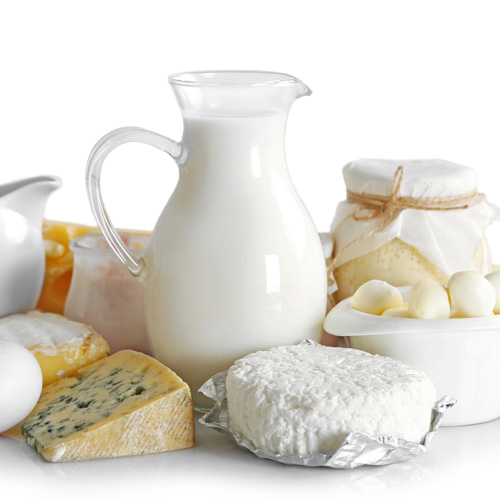
Does Lactose Intolerance
Mean No More Dairy?
Author: be well™ with Big Y® Registered Dietitian Team
The truth about being lactose intolerant and milk products.

Lactose intolerance is a type of food sensitivity that is the result of the body not producing enough lactase enzyme. Lactase helps the body digest, or break down, natural milk sugar (lactose). Uncomfortable as the side effects may be (gas, bloating, cramping and diarrhea), having lactose intolerance does not necessarily mean you need to stay clear of all milk products.

The level of lactose intolerance varies from one person to the next. So, it is important to learn the amounts and types of lactose-containing foods you can eat comfortably. This is great news, because cutting dairy foods out of your meal plan, without finding equivalent nourishing replacements, could lead to inadequate intakes of nutrients like calcium while increasing your risk for osteoporosis.¹
Here are tips from New England Dairy on ways to be a savvy shopper and incorporate dairy into your meal plan:
- Introduce milk and other dairy products slowly. Consume small amounts with meals and snacks first.
- Add milk into meals and snacks such as cereal and soups.
- See if lactose-free milk works better. Lactose-free milk provides the same nutrients but has the lactose already broken down for easier digestion.
- Cook with aged cheeses, such as cheddar and Swiss, as they are low in lactose (some brands may be lactose-free) and are better tolerated than other cheeses.
- Choose yogurt with “live, active cultures,” as they produce lactase. This lactase breaks down the lactose naturally found in yogurt and produces a lower-in-lactose, calcium-rich snack.

Keep in mind many foods and medications contain lactose, even if they are not considered dairy products. Speak to your healthcare provider and/or pharmacist to ensure any prescription or over-the-counter medications you are taking are safe. For food, read the ingredients list on labels. Look not only for the words lactose and milk but also for terms like whey, curds, milk solids, milk powder, dry milk, yogurt, cheese, cream, margarine and butter as an indicator that lactose is present.
¹Suchy FJ et al. NIH Consensus Development Conference Statement: Lactose Intolerance and Health. NIH Consens State Sci Statements. 2010 Feb 22–24; 27(2):1–27. Accessed March 30, 2021.
https://consensus.nih.gov/2010/docs/LI_CDC_2010_Final%20Statement.pdf
Reviewed 5/8/2023


